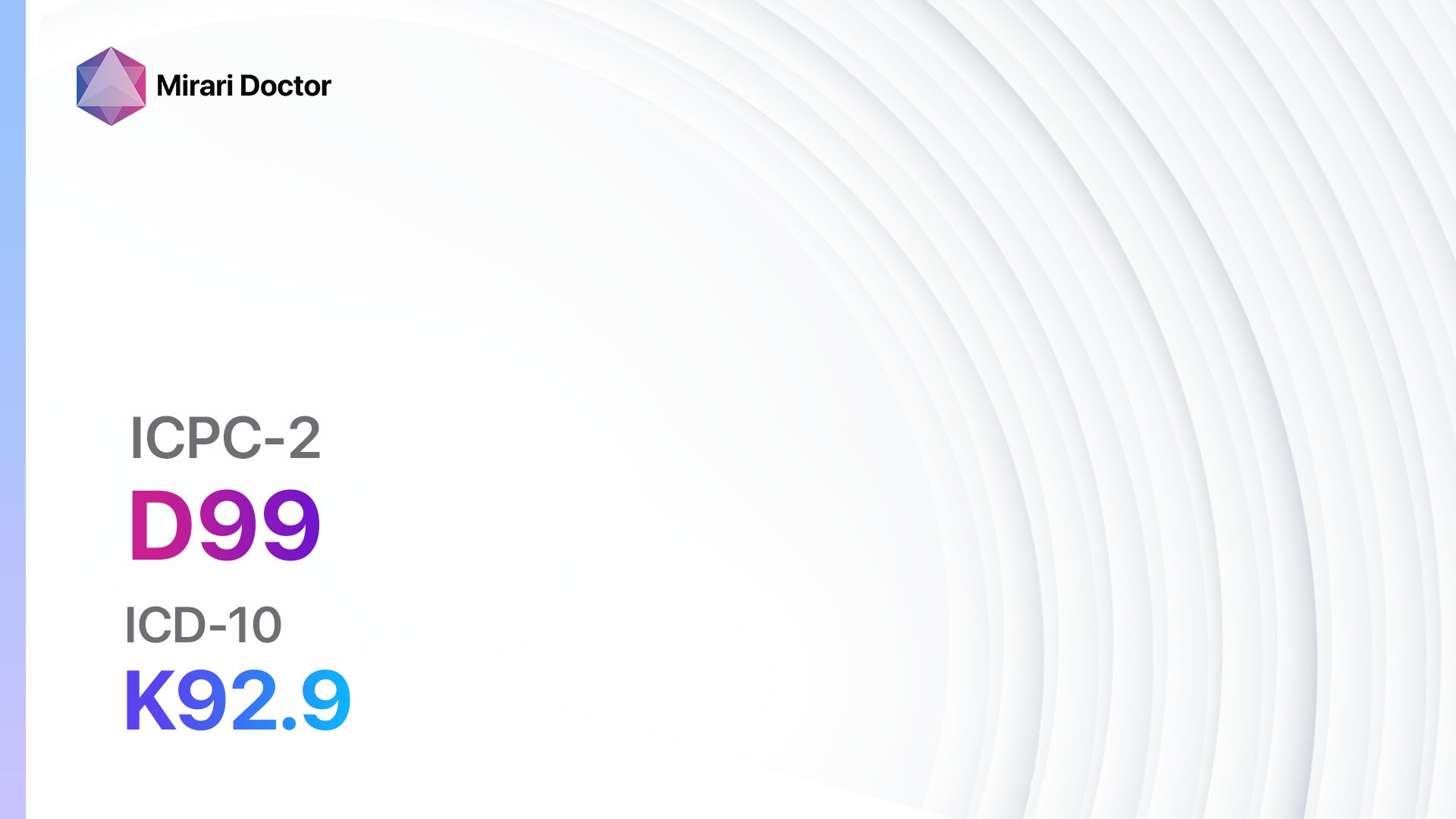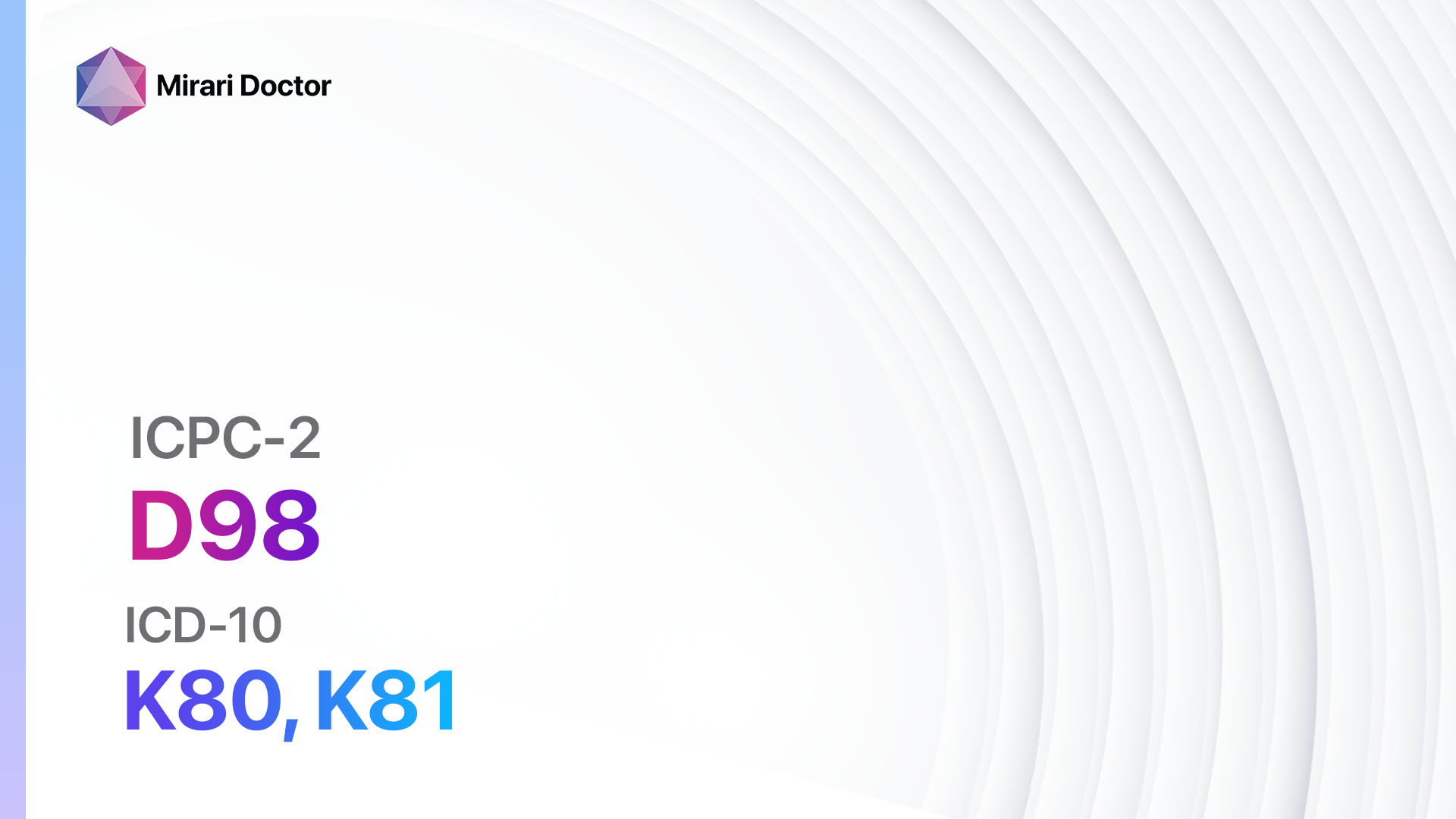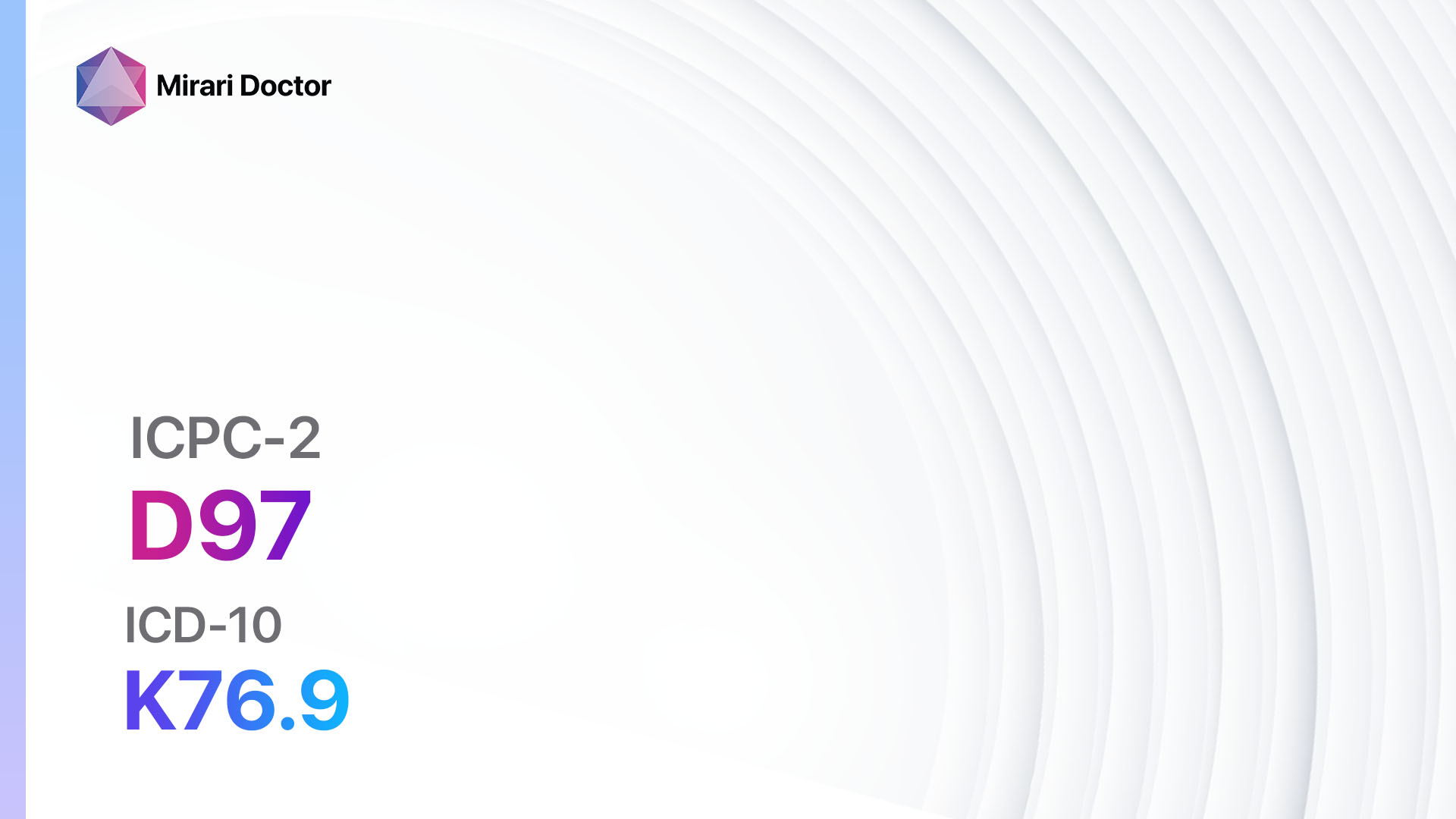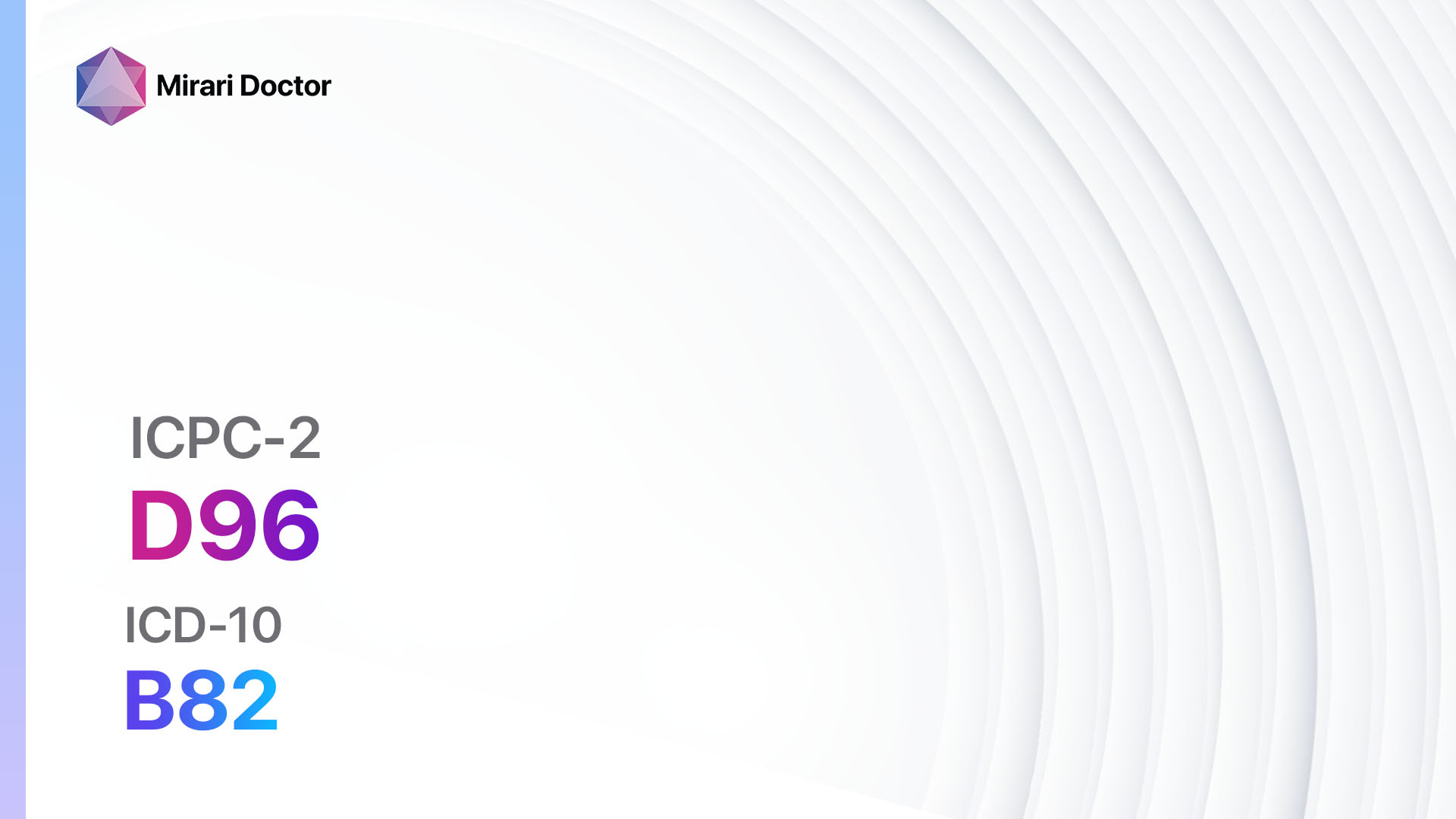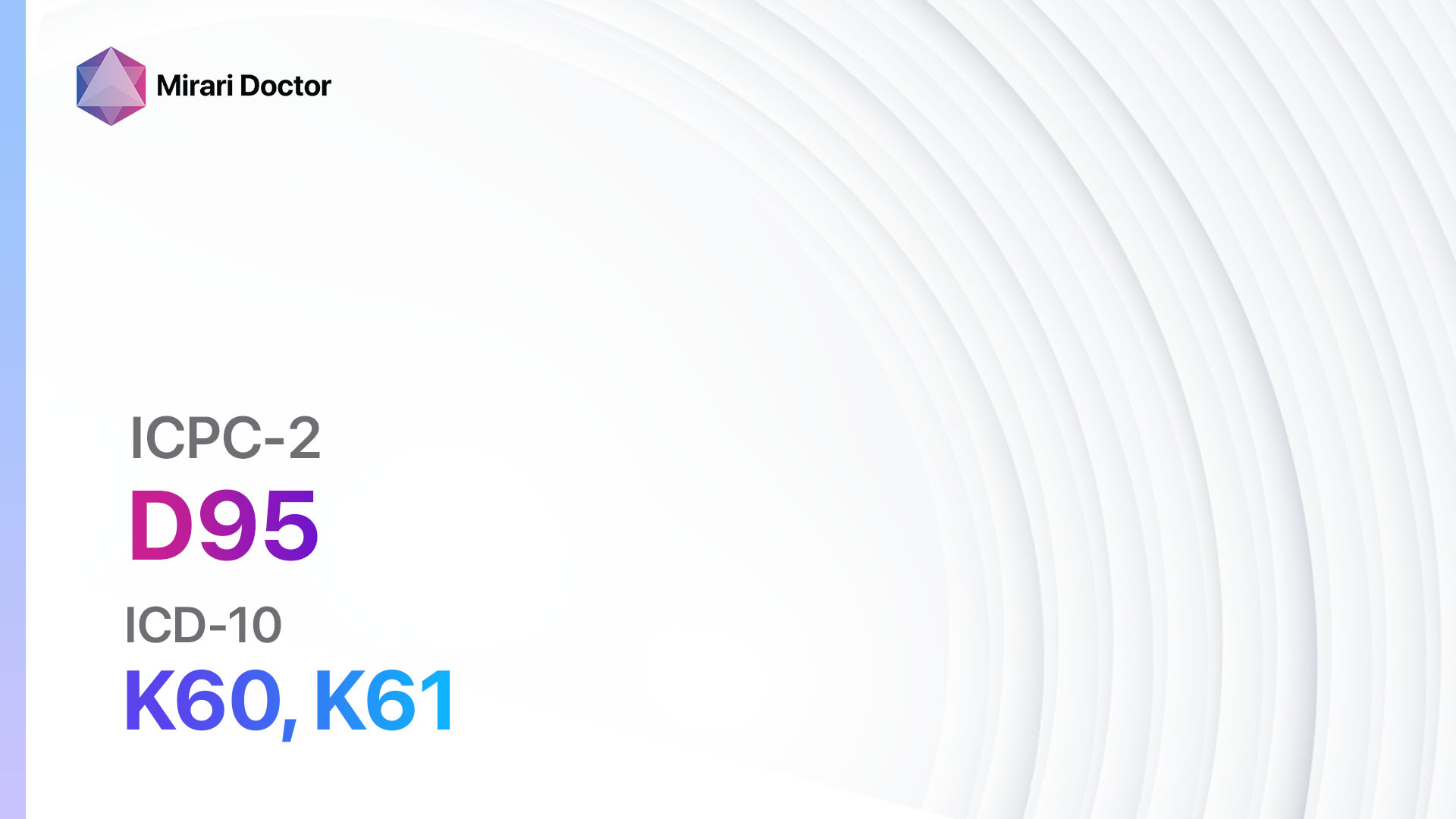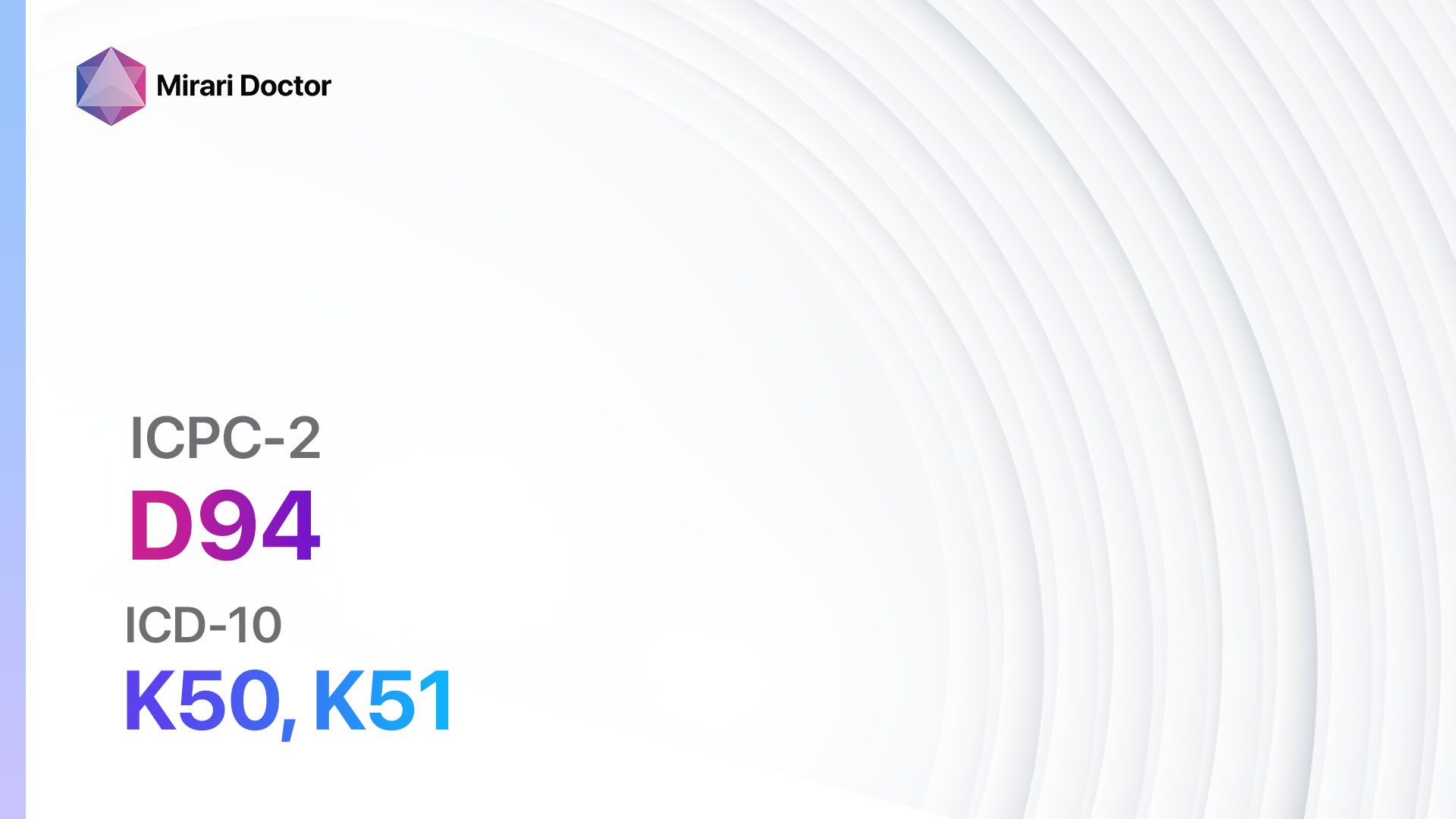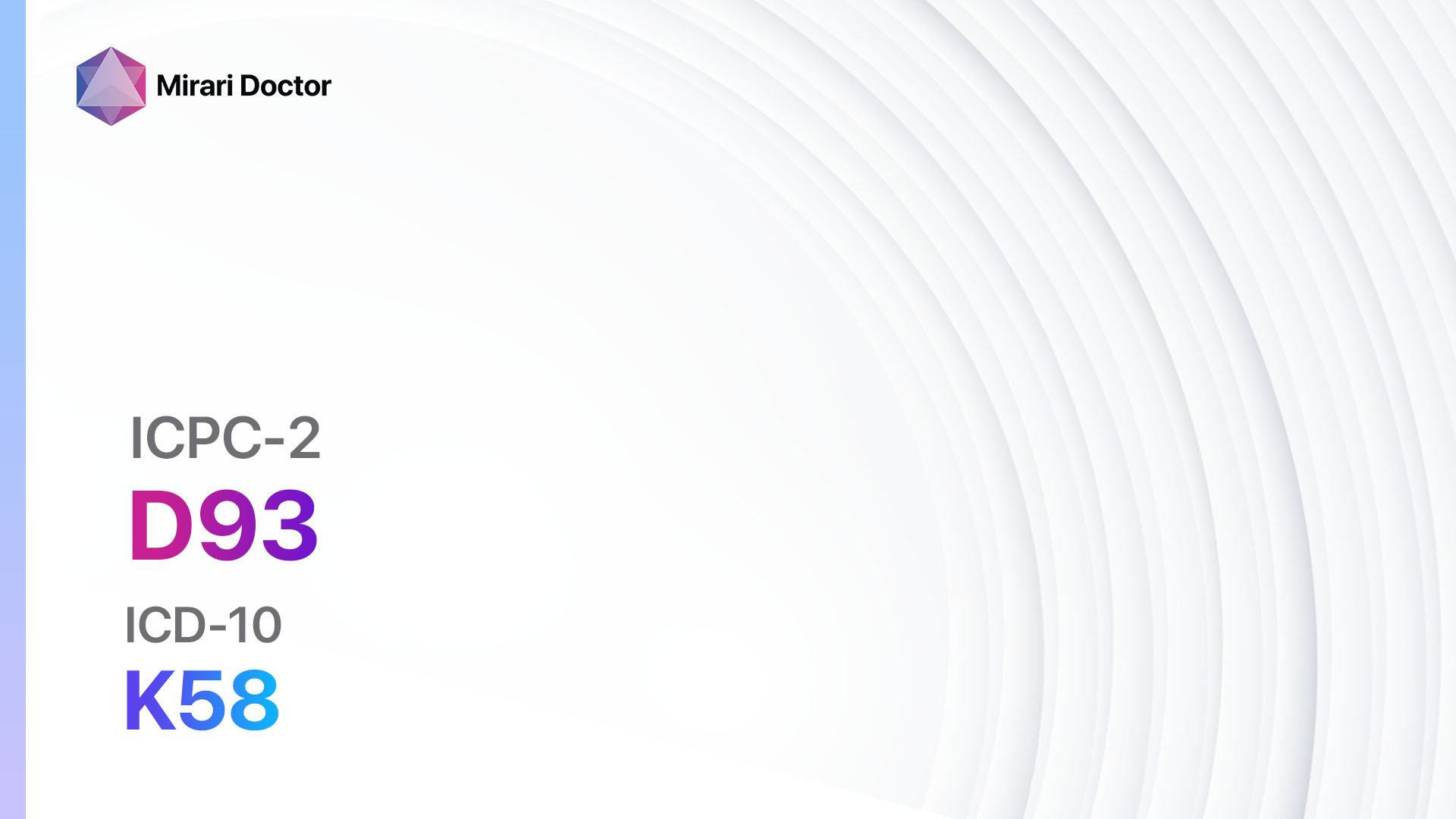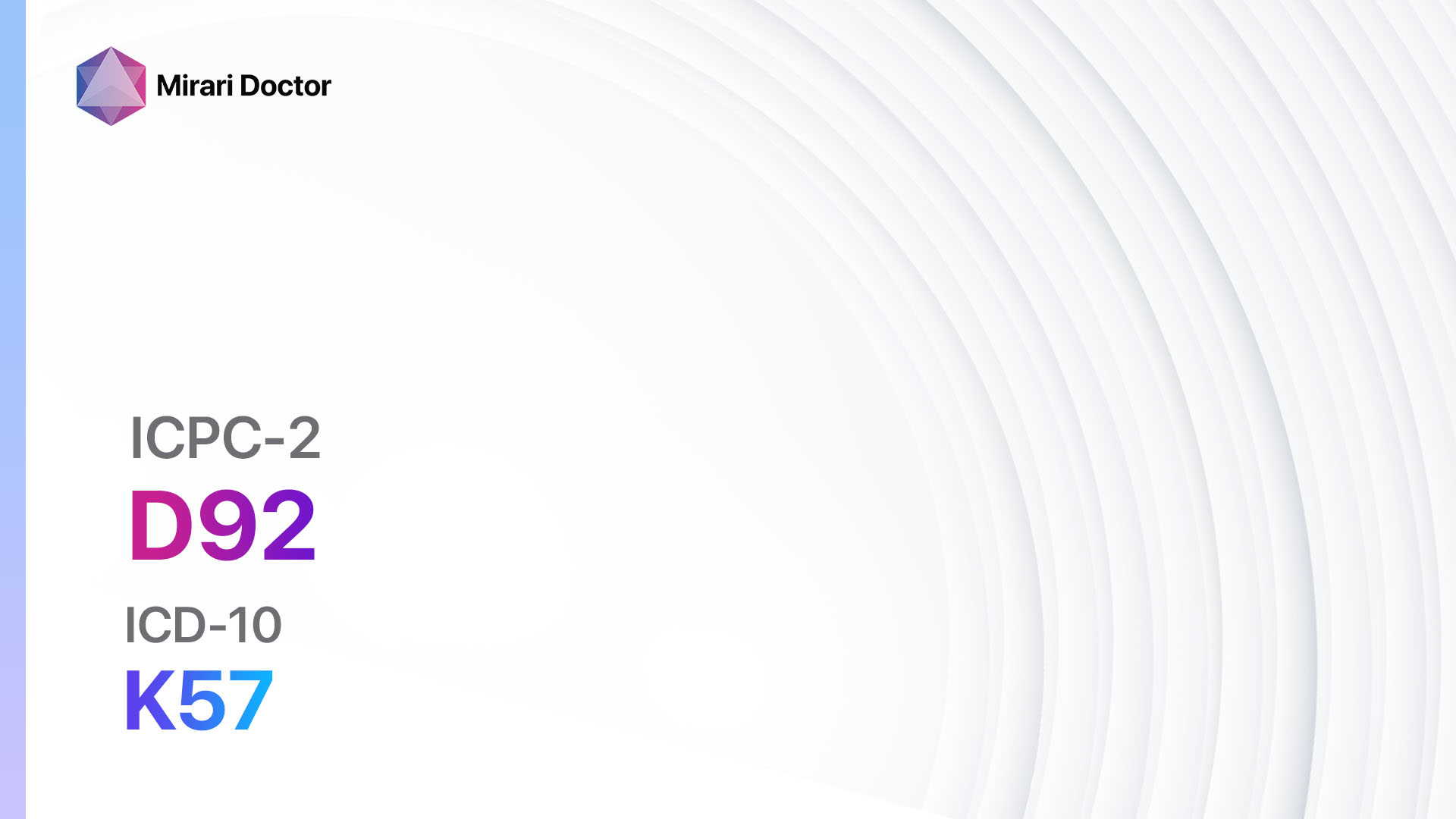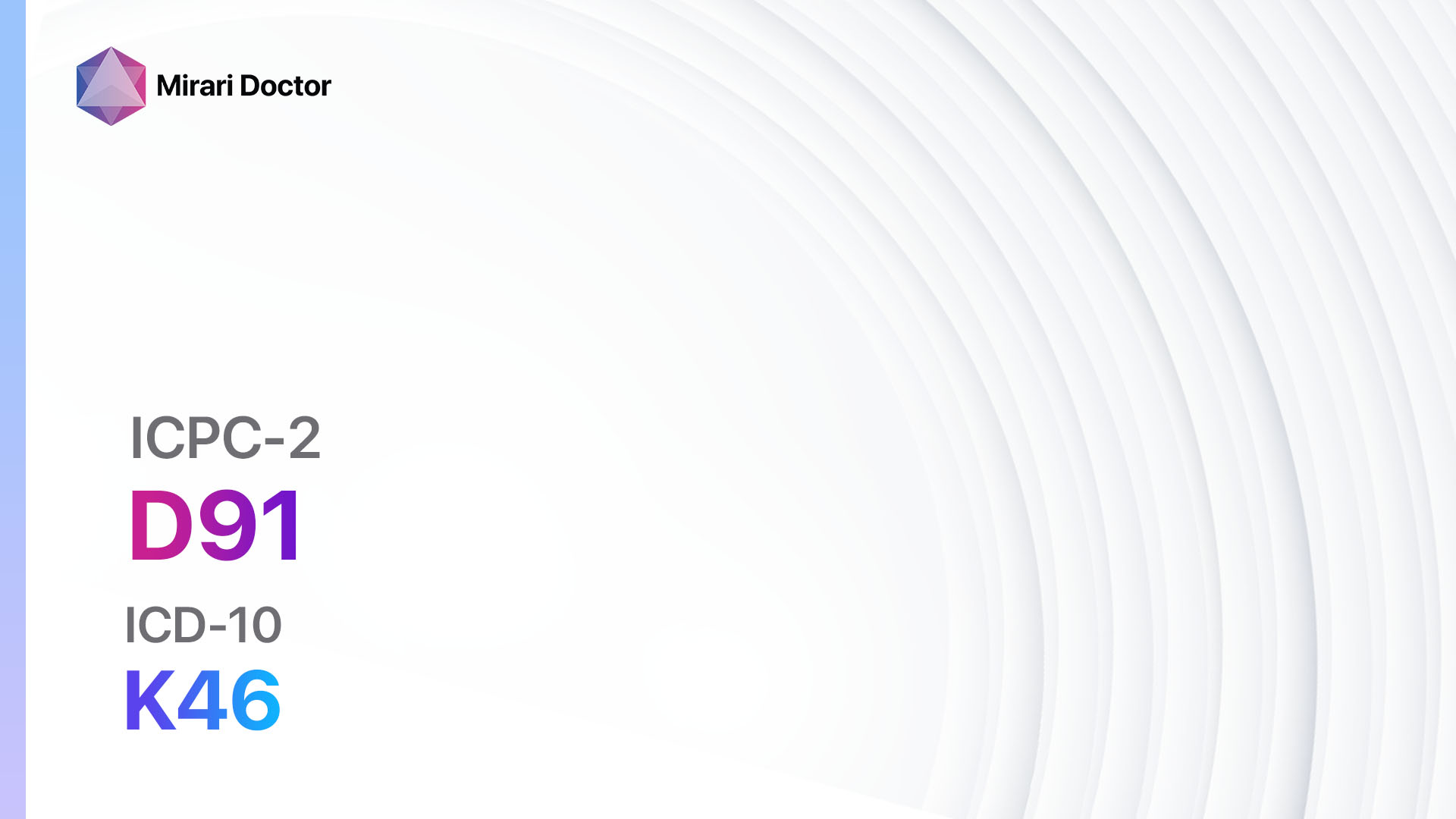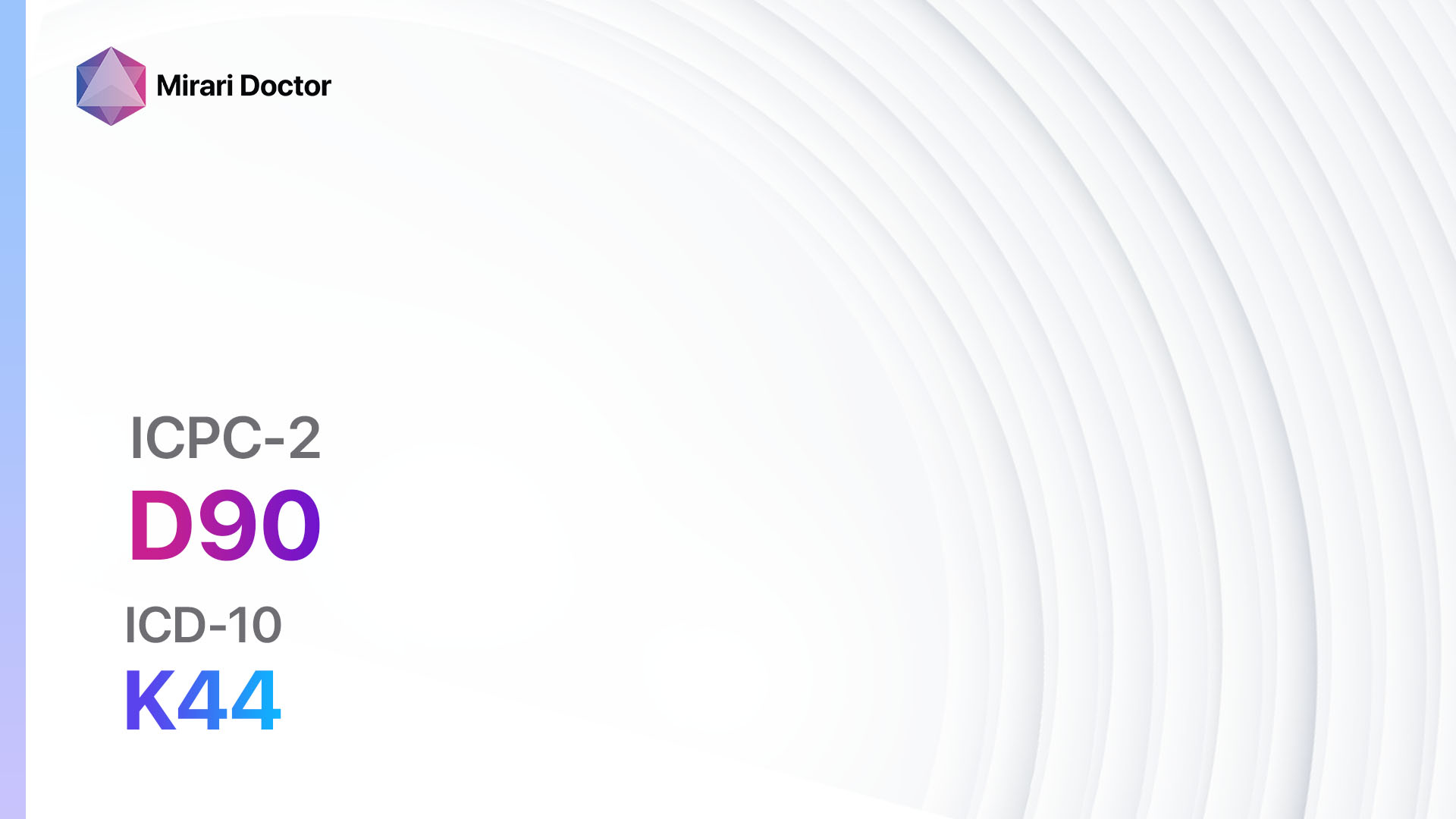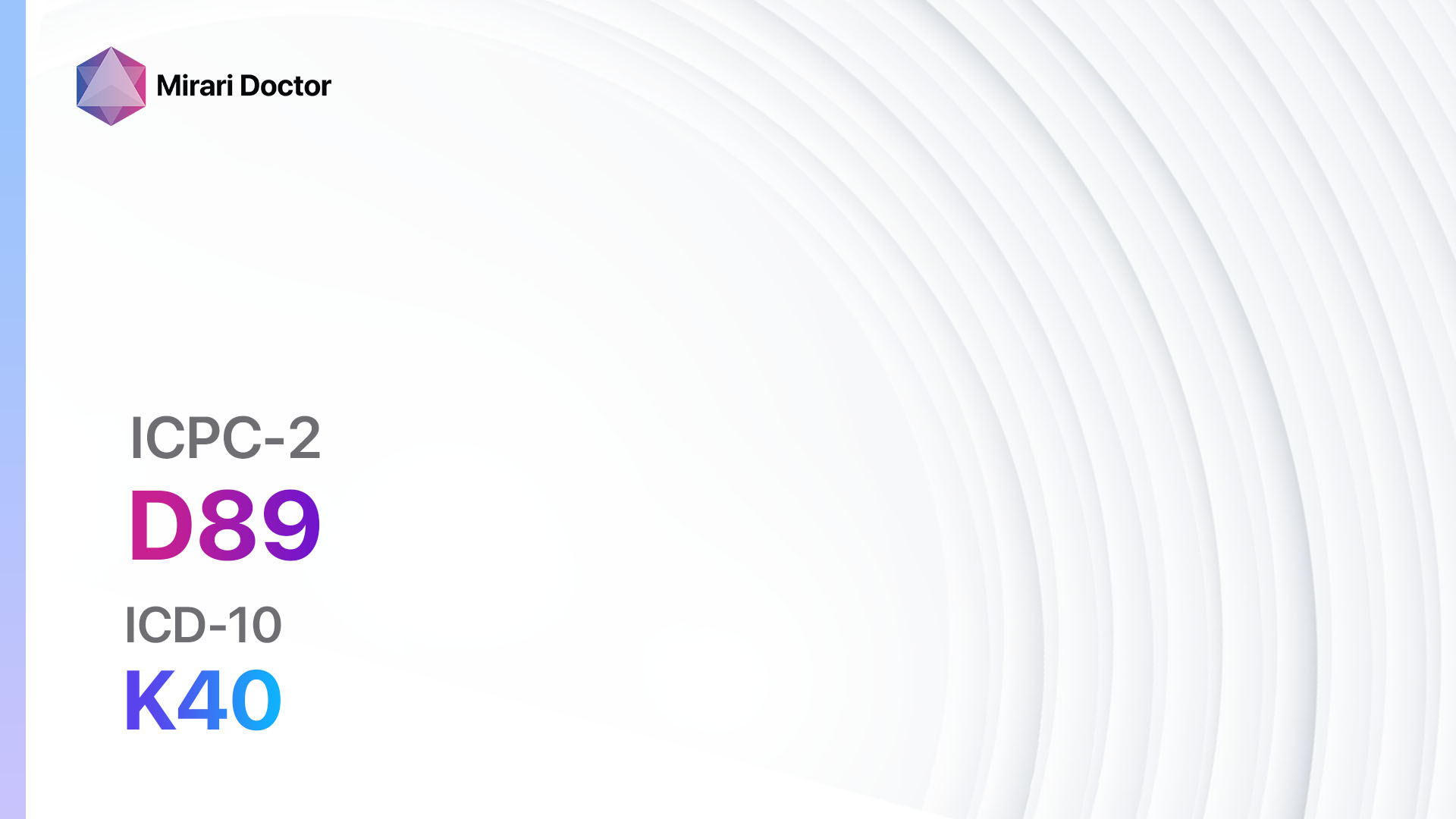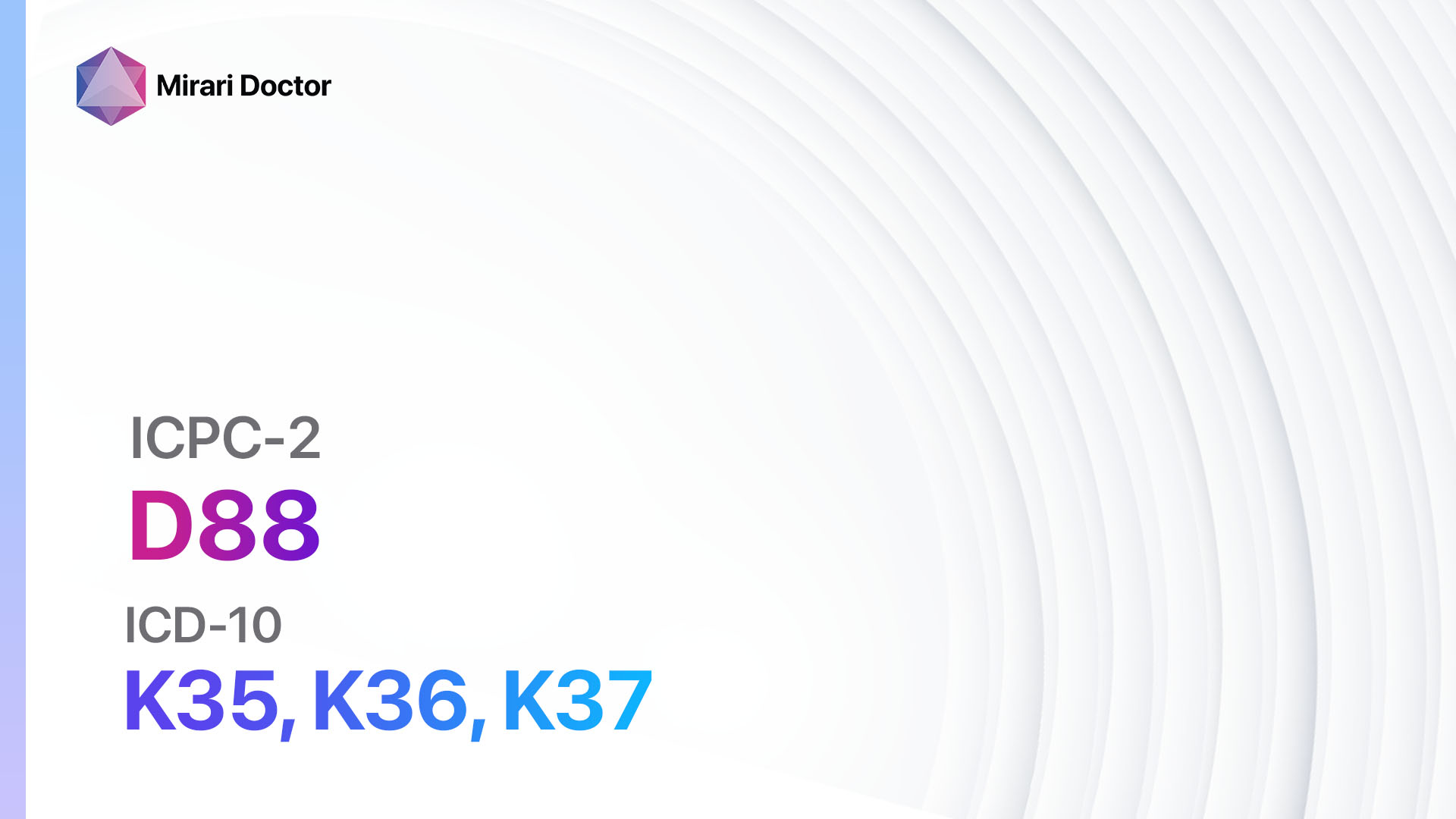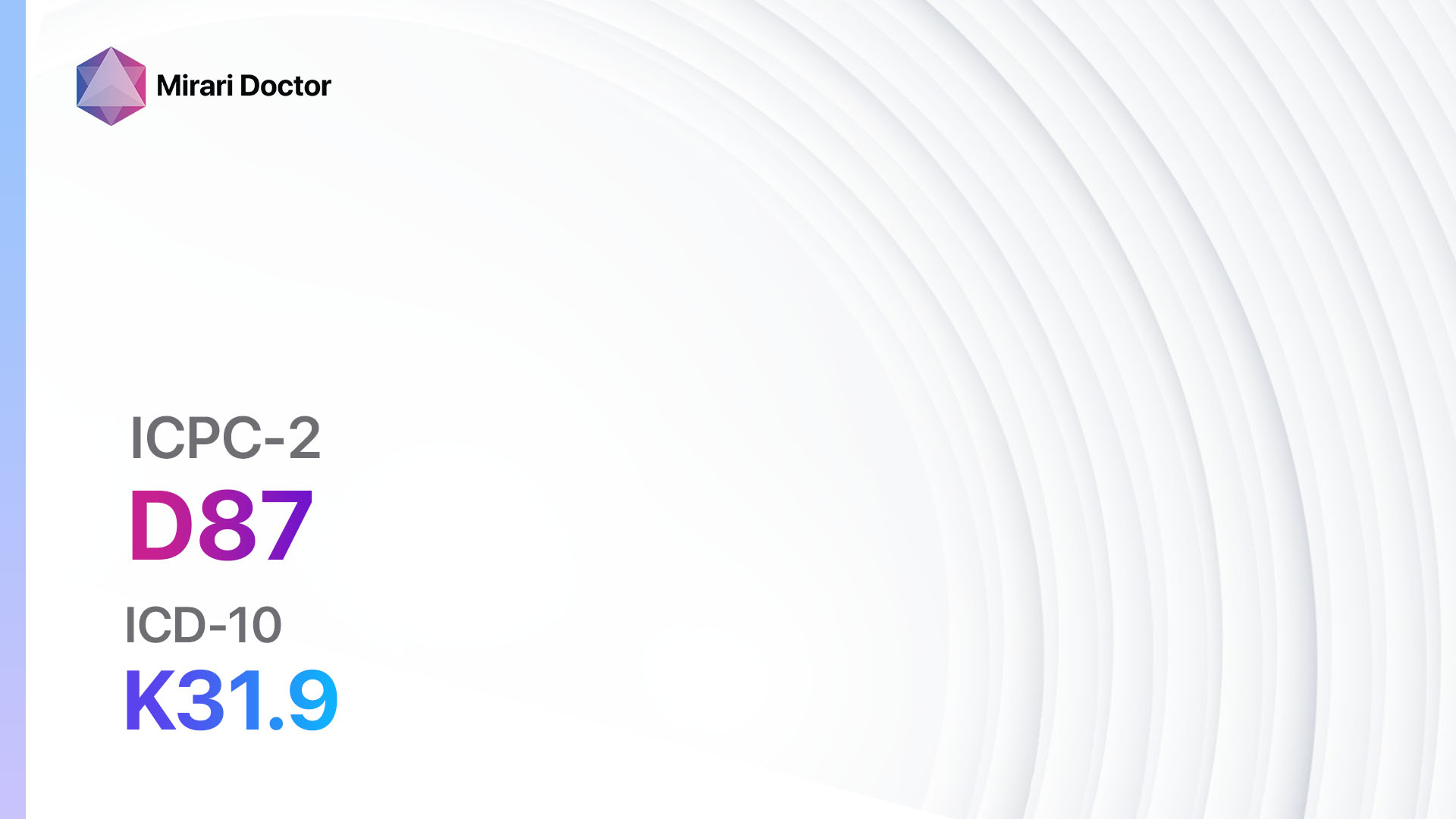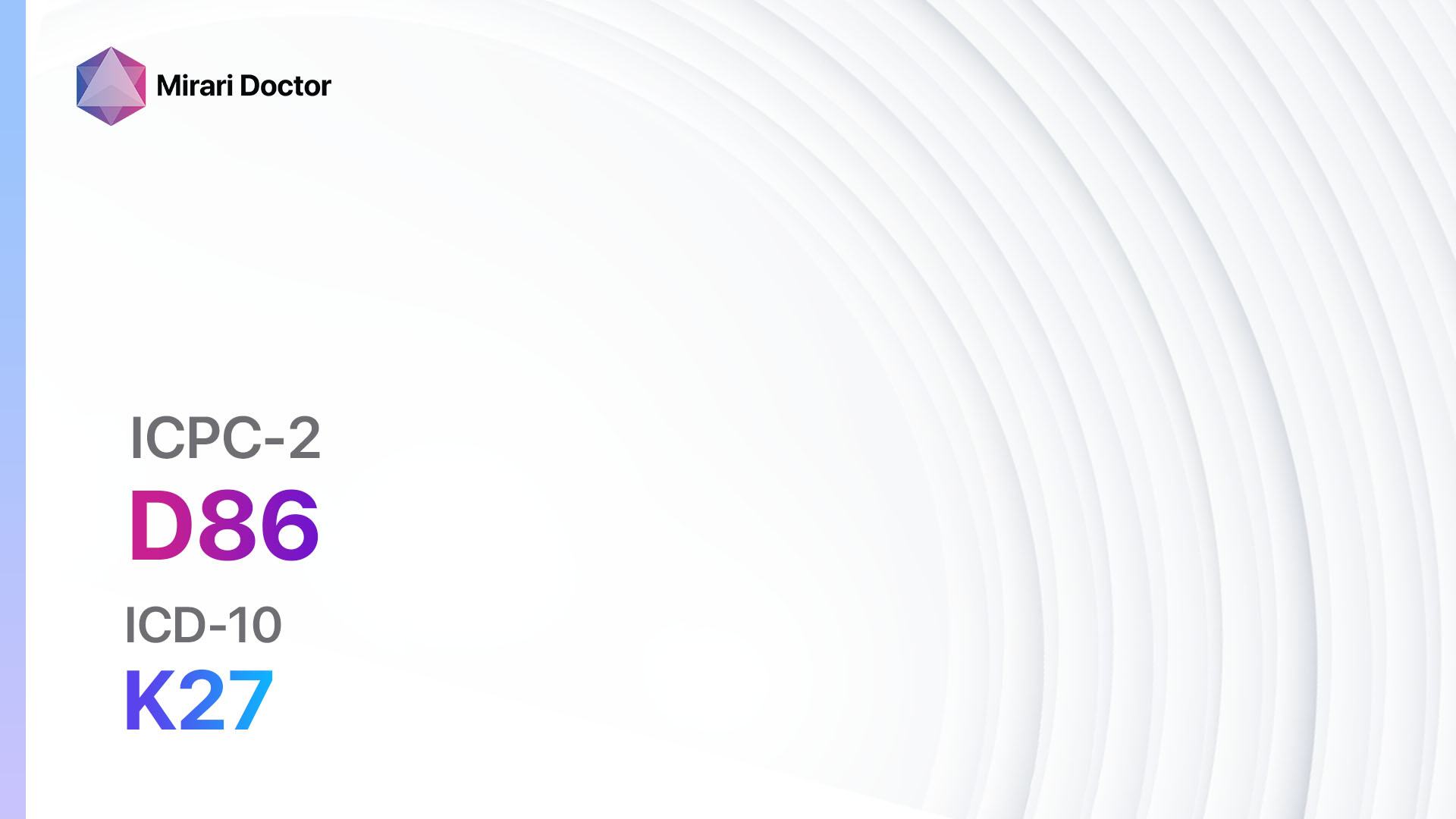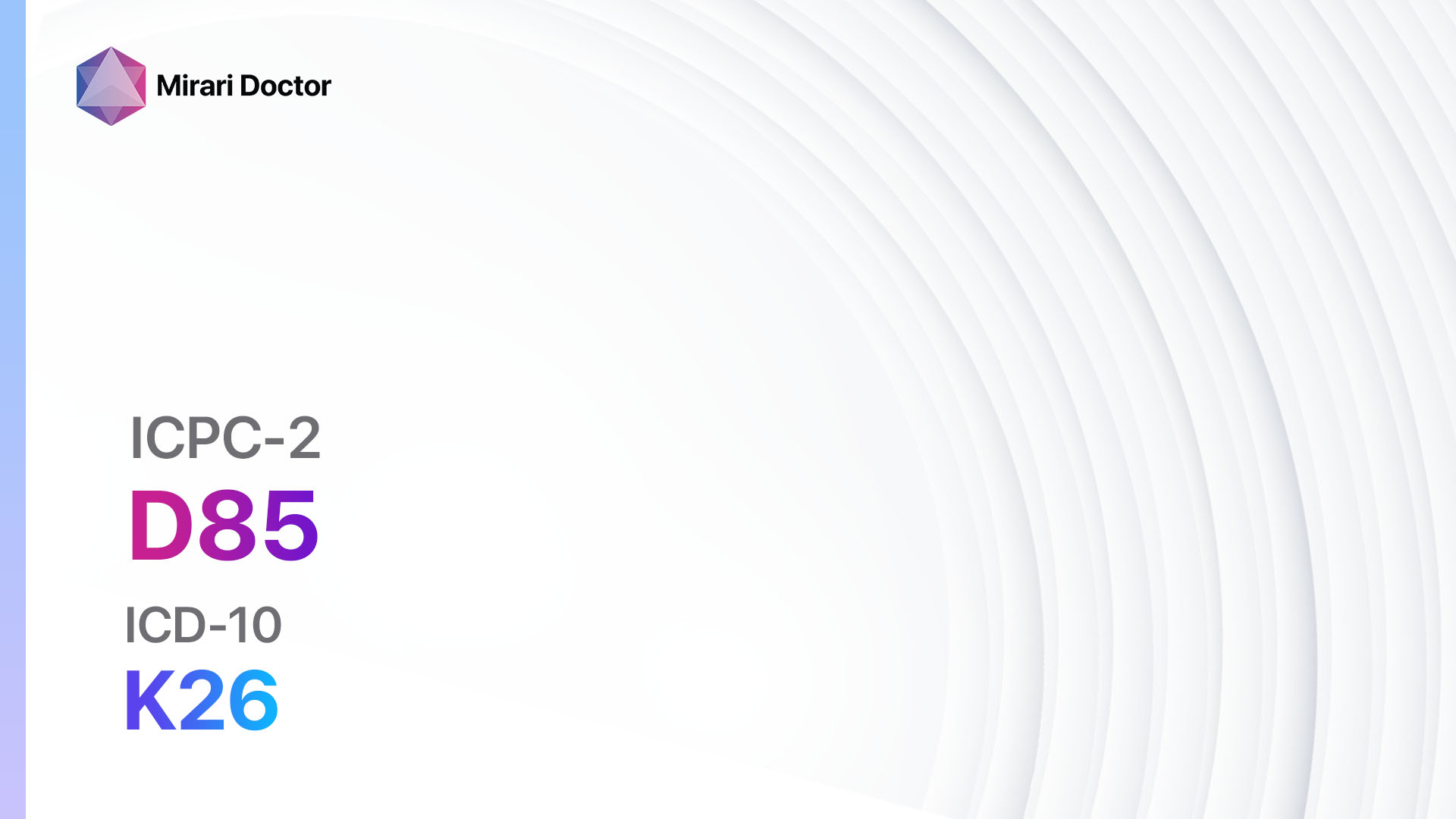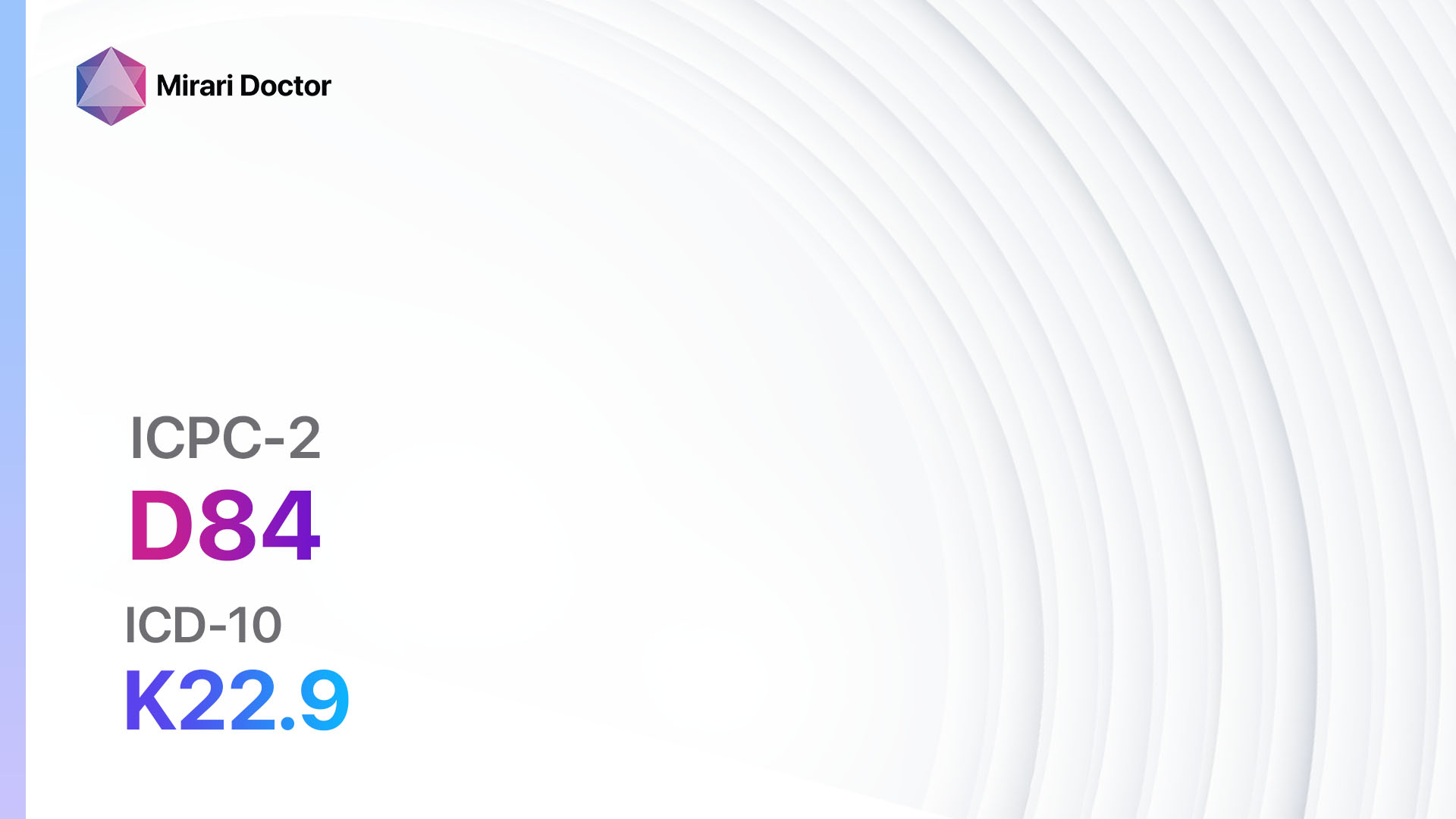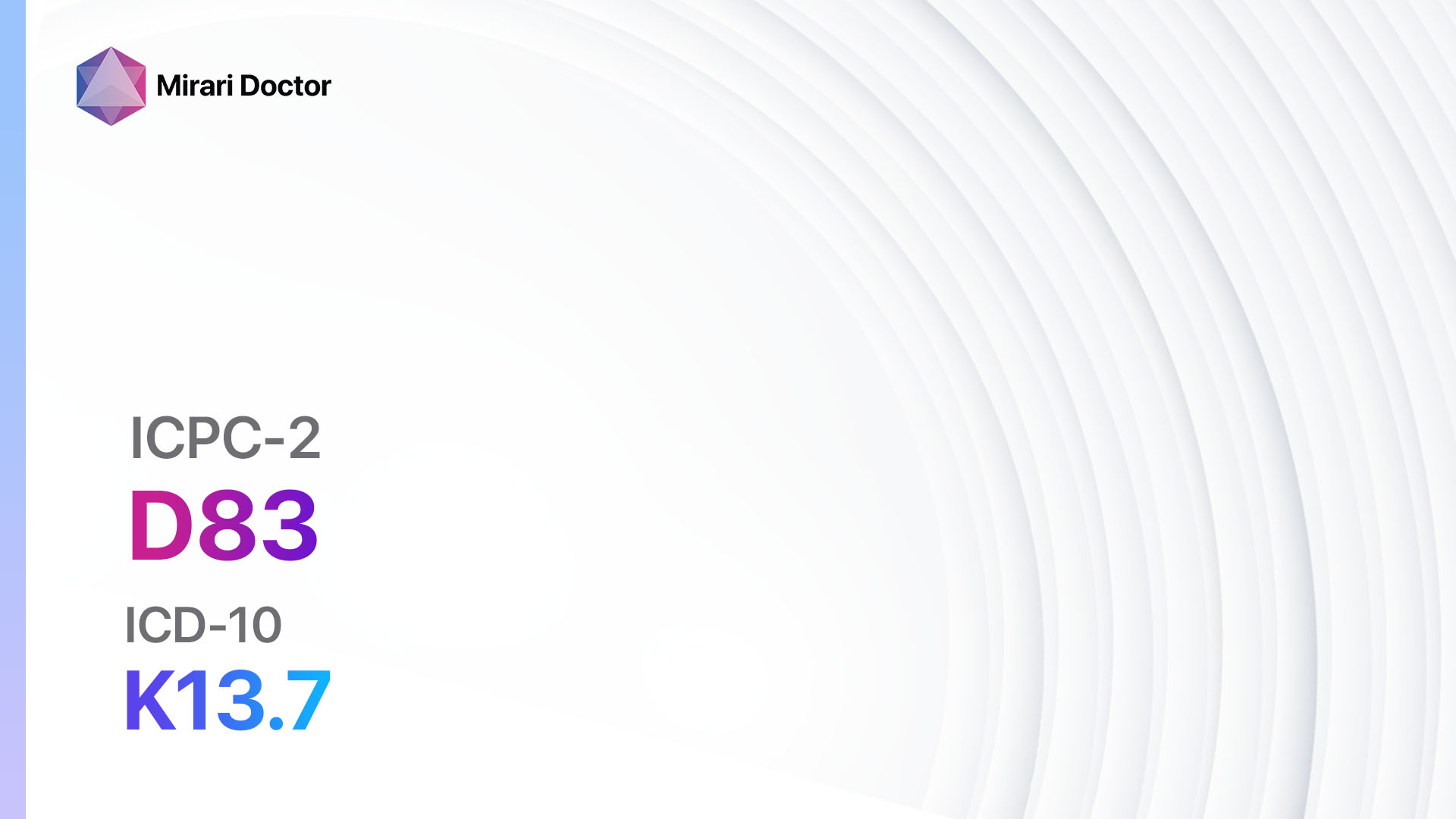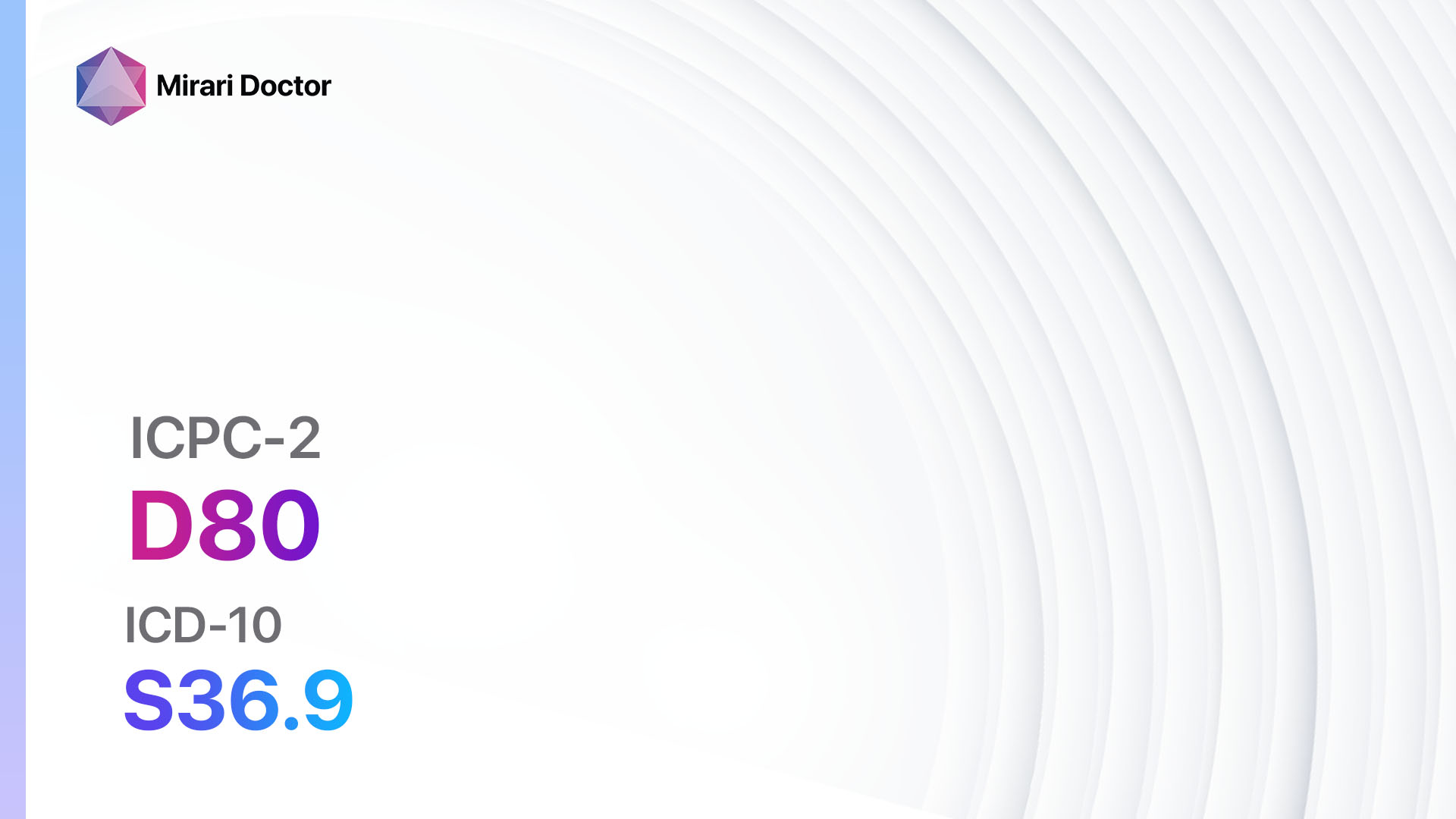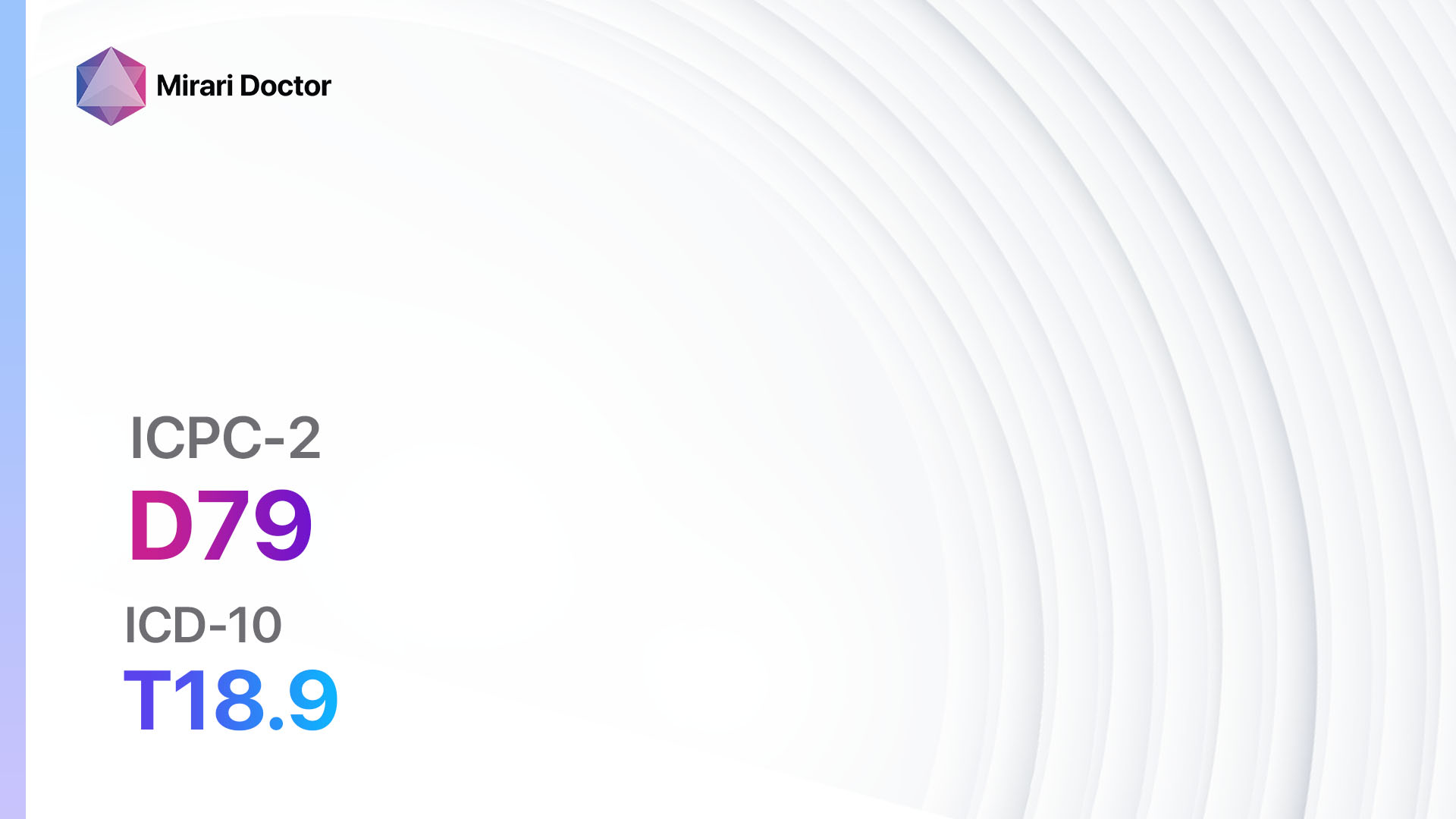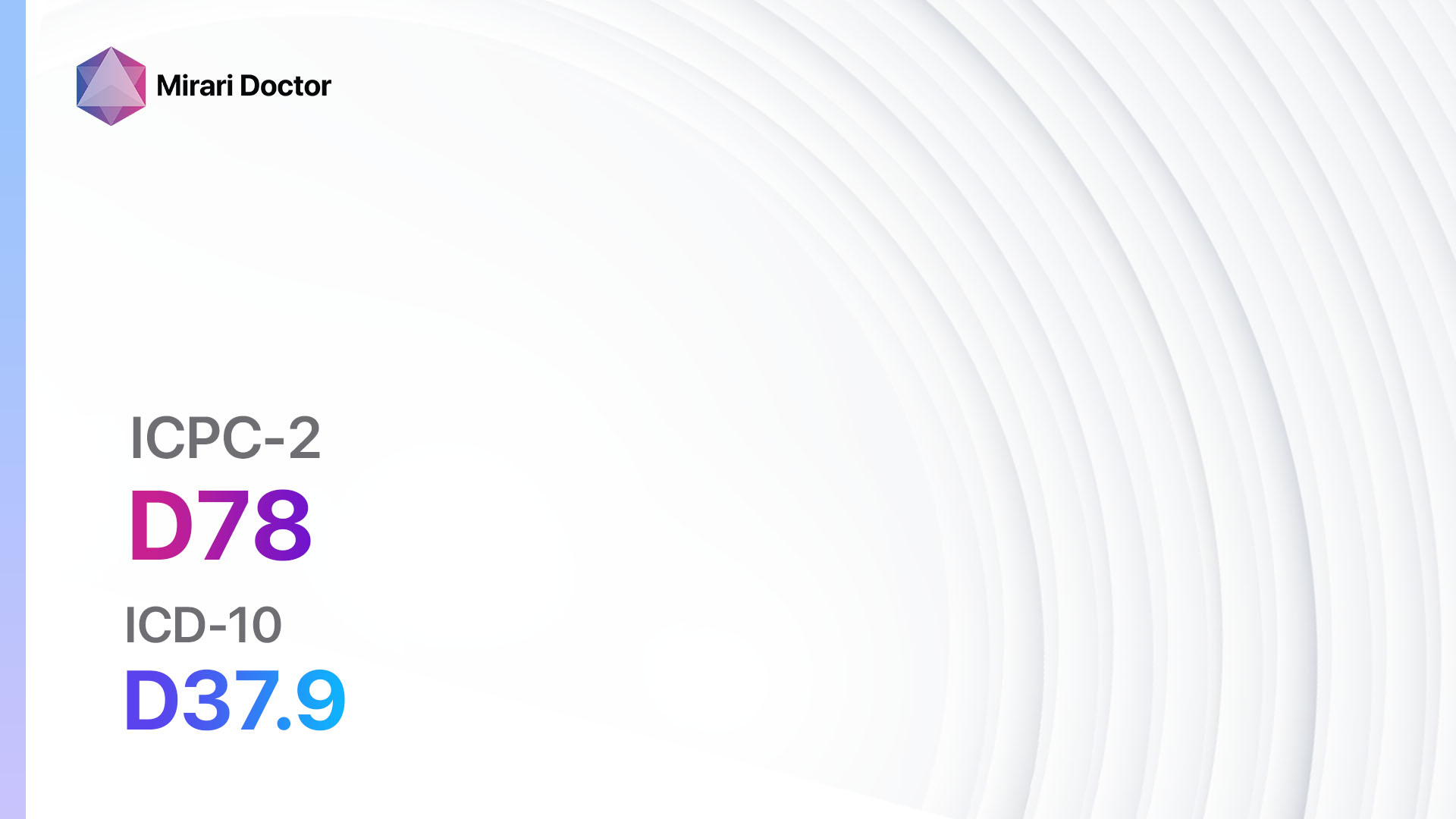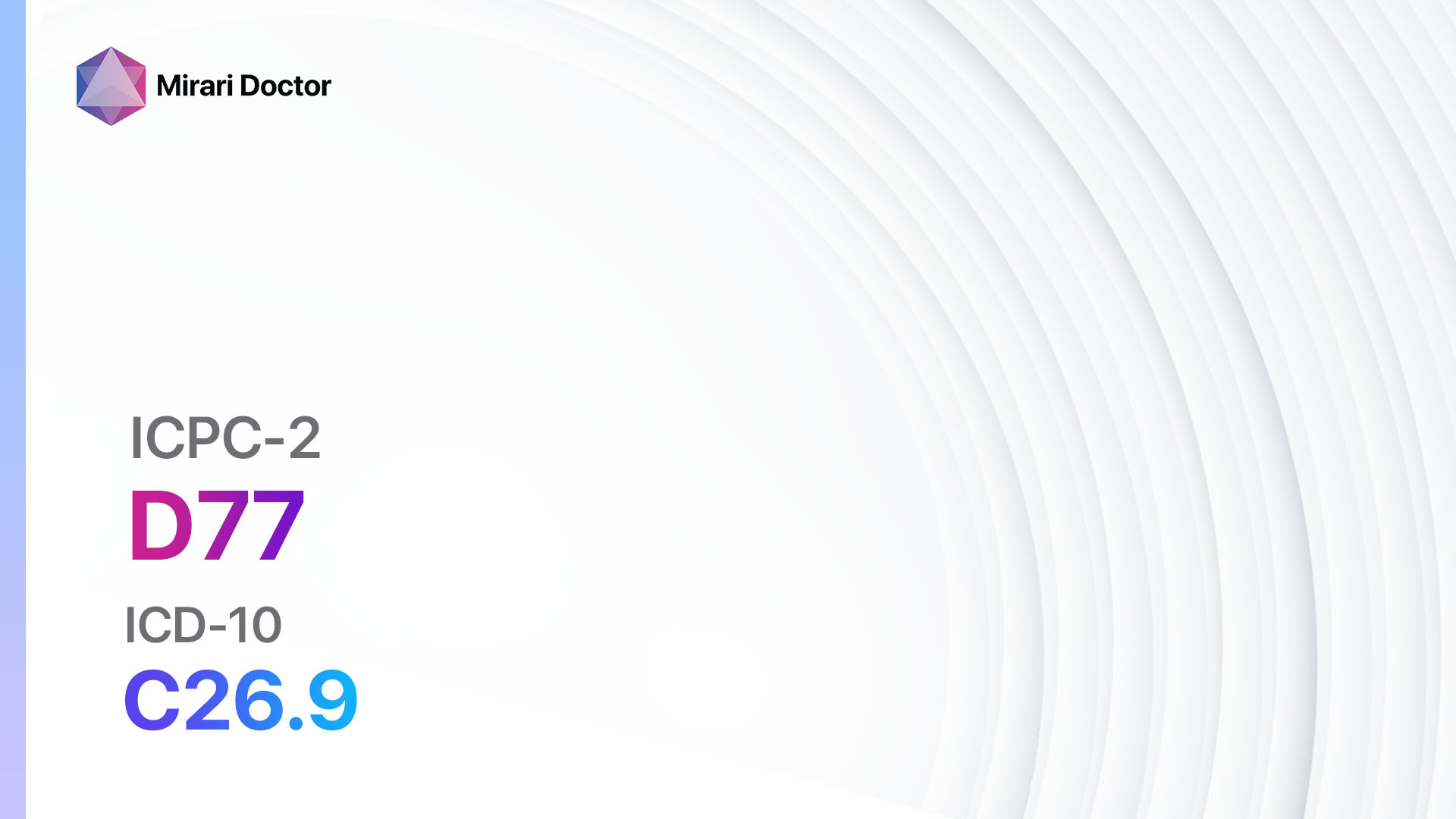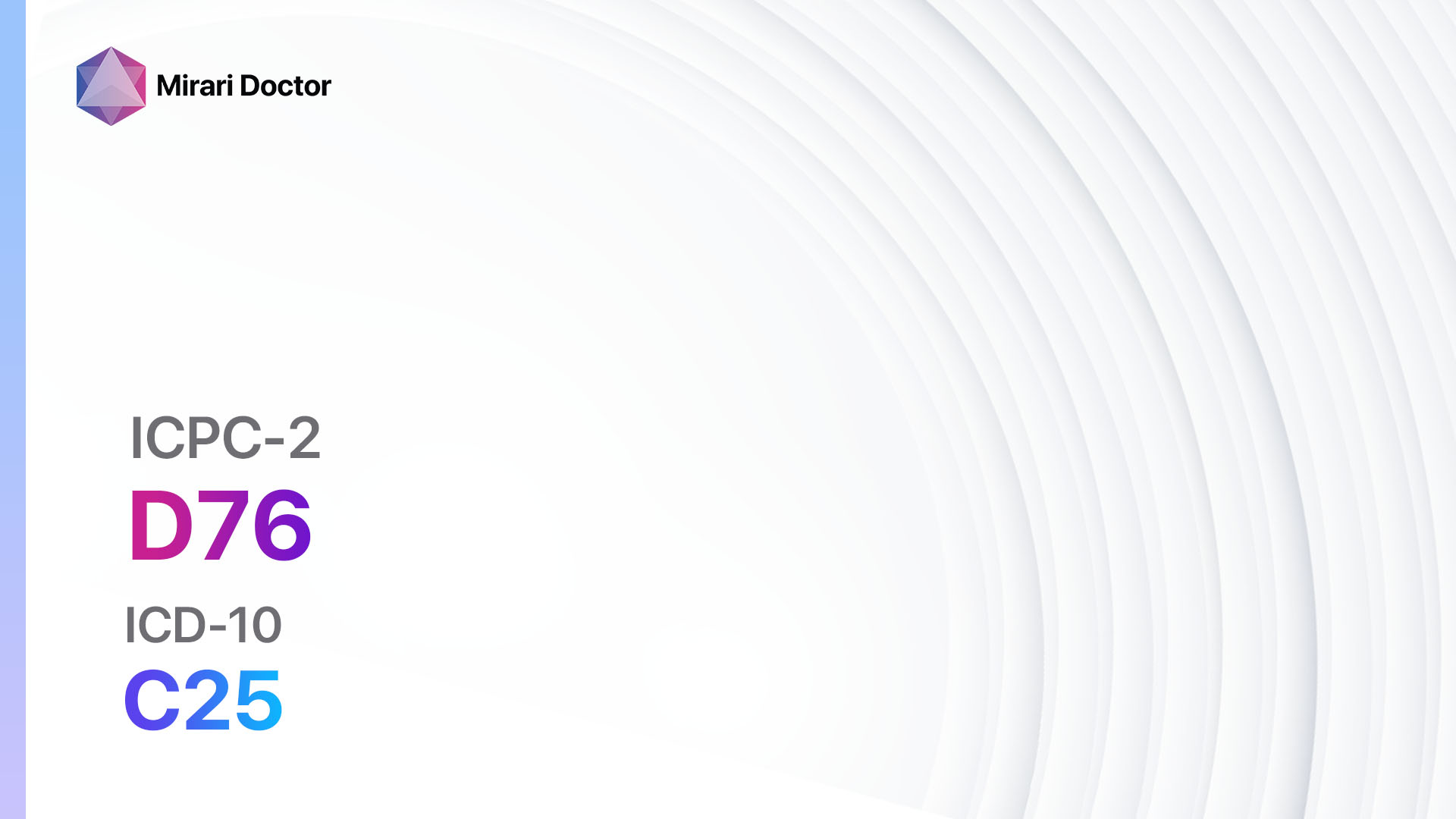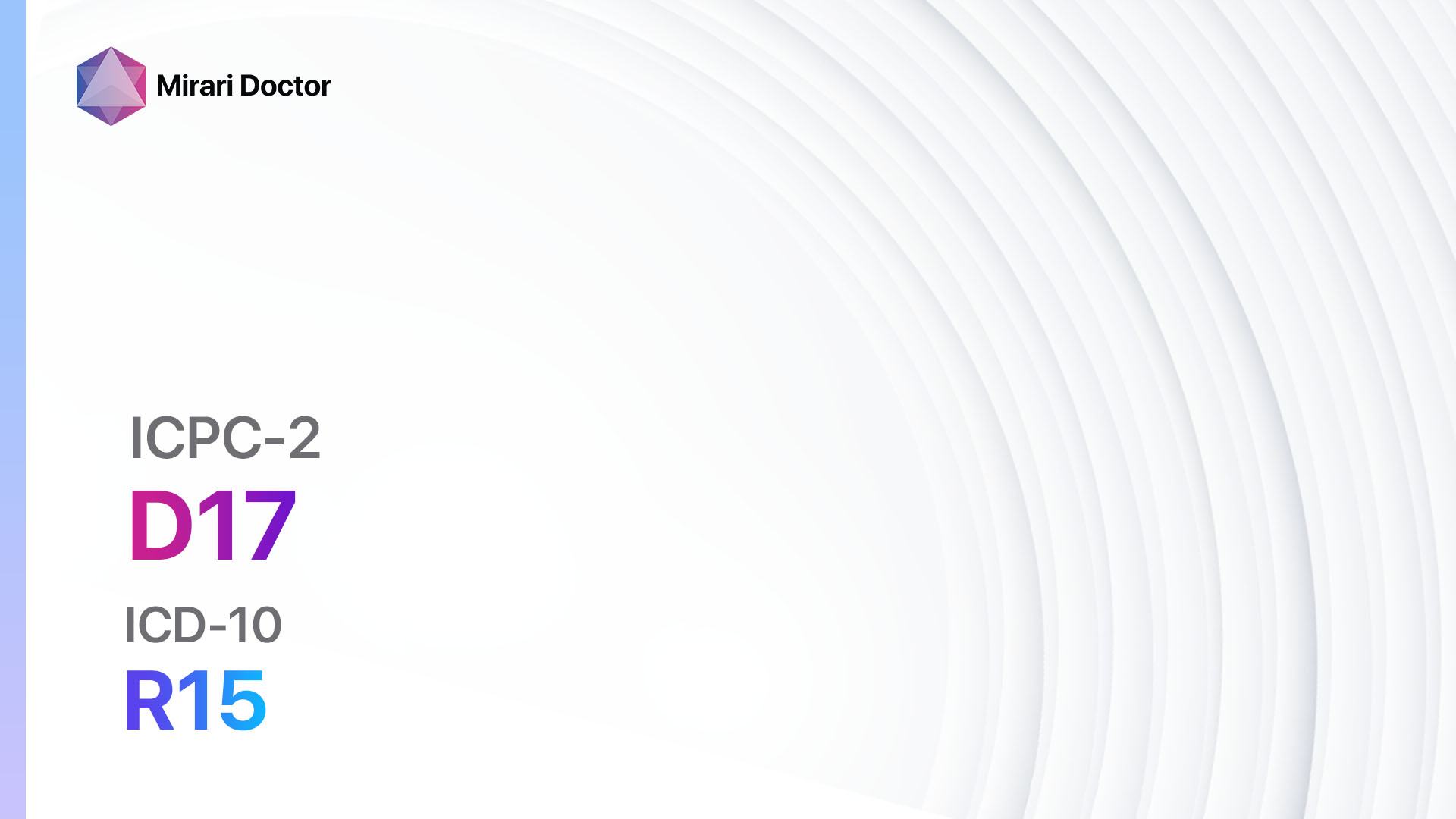
Introduction
Incontinence of bowel refers to the inability to control bowel movements, resulting in involuntary leakage of stool. This condition can significantly impact a person’s quality of life and may lead to embarrassment, social isolation, and decreased self-esteem.[1] The aim of this guide is to provide healthcare professionals with a comprehensive overview of the diagnostic steps, possible interventions, and lifestyle modifications that can help manage and treat incontinence of bowel.
Codes
Symptoms
- Frequent episodes of involuntary bowel movements
- Inability to control or delay bowel movements
- Leakage of stool during physical activities or sleep
- Urgency to have a bowel movement
- Feeling of incomplete emptying after a bowel movement[4]
Causes
- Weak or damaged sphincter muscles
- Nerve damage or injury
- Chronic constipation
- Diarrhea or loose stools
- Pelvic floor dysfunction
- Rectal prolapse
- Certain medications
- Aging[5]
Diagnostic Steps
Medical History
- Gather information about the patient’s symptoms, including frequency and severity of bowel incontinence episodes.
- Ask about any underlying medical conditions, such as diabetes or neurological disorders, that may contribute to bowel incontinence.
- Inquire about the patient’s diet and fluid intake, as certain foods and beverages can worsen symptoms.
- Assess the patient’s medication history, as some medications can cause or exacerbate bowel incontinence.
- Determine if the patient has any risk factors, such as a history of pelvic surgery or childbirth trauma.[6]
Physical Examination
- Perform a thorough physical examination, including a digital rectal examination, to assess the strength and function of the anal sphincter muscles.
- Evaluate the patient’s pelvic floor muscles for any signs of weakness or dysfunction.
- Look for any signs of rectal prolapse or other anatomical abnormalities.
- Assess the patient’s overall neurological function, as nerve damage can contribute to bowel incontinence.[7]
Laboratory Tests
- Stool analysis: This test can help identify any underlying infections or inflammatory conditions that may be causing bowel incontinence.
- Blood tests: These tests can help rule out any systemic conditions, such as diabetes or thyroid disorders, that may contribute to bowel incontinence.
- Sigmoidoscopy or colonoscopy: These procedures allow for direct visualization of the rectum and colon to identify any structural abnormalities or signs of inflammation.[8]
Diagnostic Imaging
- Anorectal manometry: This test measures the pressure and function of the anal sphincter muscles and rectum.
- Defecography: This imaging test evaluates the rectum and pelvic floor muscles during bowel movements to identify any abnormalities or dysfunction.
- Endoanal ultrasound: This procedure uses sound waves to create images of the anal sphincter muscles and surrounding structures, helping to identify any structural abnormalities or damage.[9]
Other Tests
- Anal electromyography: This test measures the electrical activity of the anal sphincter muscles to assess their function.
- Balloon expulsion test: This test evaluates the patient’s ability to expel a balloon filled with water from the rectum, assessing the coordination and strength of the pelvic floor muscles.
- Colonic transit study: This test assesses the movement of stool through the colon to identify any abnormalities or delays that may contribute to bowel incontinence.[10]
Follow-up and Patient Education
- Schedule regular follow-up appointments to monitor the patient’s progress and adjust treatment plans as needed.
- Provide education on dietary modifications, pelvic floor exercises, and other lifestyle interventions that can help manage bowel incontinence.
- Offer emotional support and resources for coping with the emotional and social impact of bowel incontinence.
Possible Interventions
Traditional Interventions
Medications:
Top 5 drugs for Incontinence of bowel:
- Loperamide (Imodium):
- Cost: $5-$20 for a 30-day supply.
- Contraindications: Allergy to loperamide, abdominal pain without diarrhea, acute dysentery.
- Side effects: Constipation, dizziness, drowsiness.
- Severe side effects: Severe allergic reactions, paralytic ileus.
- Drug interactions: Quinidine, ritonavir, saquinavir.
- Warning: Do not exceed the recommended dose.
- Dicyclomine (Bentyl):
- Cost: $10-$30 for a 30-day supply.
- Contraindications: Glaucoma, myasthenia gravis, obstructive uropathy.
- Side effects: Dry mouth, blurred vision, dizziness.
- Severe side effects: Severe allergic reactions, urinary retention.
- Drug interactions: Anticholinergic drugs, opioids.
- Warning: May cause drowsiness or dizziness.
- Psyllium (Metamucil):
- Cost: $10-$20 for a 30-day supply.
- Contraindications: Intestinal obstruction, difficulty swallowing.
- Side effects: Gas, bloating, stomach cramps.
- Severe side effects: Allergic reactions, severe abdominal pain.
- Drug interactions: Warfarin, lithium.
- Warning: Take with plenty of water.
- Bisacodyl (Dulcolax):
- Cost: $5-$15 for a 30-day supply.
- Contraindications: Intestinal obstruction, severe abdominal pain, appendicitis.
- Side effects: Abdominal cramps, diarrhea, nausea.
- Severe side effects: Severe allergic reactions, electrolyte imbalance.
- Drug interactions: Antacids, milk, and dairy products.
- Warning: Do not crush or chew tablets.
- Sacral nerve stimulation (InterStim):
- Cost: $15,000-$25,000 for the procedure.
- Contraindications: Pregnancy, pacemakers, active infections.
- Side effects: Pain or discomfort at the implant site, temporary changes in bowel or bladder function.
- Severe side effects: Infection, nerve damage.
- Drug interactions: Not applicable.
- Warning: Requires surgical implantation.
Alternative Drugs:
- Tegaserod (Zelnorm): A serotonin receptor agonist used for the treatment of chronic constipation.
- Clonidine (Catapres): An alpha-2 adrenergic agonist that can help reduce bowel movements and improve control.
- Duloxetine (Cymbalta): A selective serotonin and norepinephrine reuptake inhibitor that can help improve symptoms of bowel incontinence.
- Botox (Botulinum toxin): Injected into the anal sphincter muscles to help relax them and improve control.
- Biofeedback therapy: A non-drug intervention that uses sensors and visual feedback to help patients learn to control their pelvic floor muscles.
Surgical Procedures:
- Sphincteroplasty: Surgical repair of the anal sphincter muscles to improve control. Cost: $10,000-$20,000.
- Colostomy: Creation of an artificial opening in the abdominal wall to divert stool into a bag. Cost: $20,000-$30,000.
- Sacral nerve stimulation: Implantation of a device that delivers electrical impulses to the sacral nerves to improve bowel control. Cost: $15,000-$25,000.
Alternative Interventions
- Acupuncture: May help improve bowel control and reduce symptoms. Cost: $60-$120 per session.
- Biofeedback therapy: Teaches patients to control their pelvic floor muscles through visual and auditory feedback. Cost: $100-$200 per session.
- Physical therapy: Focuses on strengthening the pelvic floor muscles and improving coordination. Cost: $75-$150 per session.
- Dietary modifications: Avoiding trigger foods, increasing fiber intake, and staying hydrated can help regulate bowel movements. Cost: Varies depending on food choices.
- Pelvic floor exercises: Regularly performing exercises to strengthen the pelvic floor muscles can improve bowel control. Cost: Free.
Lifestyle Interventions
- Healthy diet: Eating a balanced diet rich in fiber and avoiding trigger foods can help regulate bowel movements. Cost: Varies depending on food choices.
- Regular exercise: Engaging in regular physical activity can help improve bowel function and control. Cost: Varies depending on chosen activities.
- Weight management: Maintaining a healthy weight can reduce pressure on the pelvic floor muscles and improve bowel control. Cost: Varies depending on chosen weight management methods.
- Smoking cessation: Quitting smoking can improve overall bowel health and reduce the risk of bowel incontinence. Cost: Varies depending on chosen smoking cessation methods.
- Stress management: Learning stress reduction techniques, such as meditation or yoga, can help improve bowel control. Cost: Varies depending on chosen stress management methods.
It is important to note that the cost ranges provided are approximate and may vary depending on the location and availability of the interventions. It is recommended to consult with a healthcare professional for personalized treatment options and cost estimates.
Mirari Cold Plasma Alternative Intervention
Understanding Mirari Cold Plasma
- Safe and Non-Invasive Treatment: Mirari Cold Plasma is a safe and non-invasive treatment option for various skin conditions. It does not require incisions, minimizing the risk of scarring, bleeding, or tissue damage.
- Efficient Extraction of Foreign Bodies: Mirari Cold Plasma facilitates the removal of foreign bodies from the skin by degrading and dissociating organic matter, allowing easier access and extraction.
- Pain Reduction and Comfort: Mirari Cold Plasma has a local analgesic effect, providing pain relief during the treatment, making it more comfortable for the patient.
- Reduced Risk of Infection: Mirari Cold Plasma has antimicrobial properties, effectively killing bacteria and reducing the risk of infection.
- Accelerated Healing and Minimal Scarring: Mirari Cold Plasma stimulates wound healing and tissue regeneration, reducing healing time and minimizing the formation of scars.
Mirari Cold Plasma Prescription
Video instructions for using Mirari Cold Plasma Device – D17 Incontinence of bowel (ICD-10:R15)
| Mild | Moderate | Severe |
| Mode setting: 1 (Infection) Location: 2 (Prostate & Uterus) Morning: 15 minutes, Evening: 15 minutes |
Mode setting: 1 (Infection) Location: 2 (Prostate & Uterus) Morning: 30 minutes, Lunch: 30 minutes, Evening: 30 minutes |
Mode setting: 1 (Infection) Location: 2 (Prostate & Uterus) Morning: 30 minutes, Lunch: 30 minutes, Evening: 30 minutes |
| Mode setting: 2 (Wound Healing) Location: 3 (Kidney, Liver & Spleen) Morning: 15 minutes, Evening: 15 minutes |
Mode setting: 2 (Wound Healing) Location: 3 (Kidney, Liver & Spleen) Morning: 30 minutes, Lunch: 30 minutes, Evening: 30 minutes |
Mode setting: 2 (Wound Healing) Location: 3 (Kidney, Liver & Spleen) Morning: 30 minutes, Lunch: 30 minutes, Evening: 30 minutes |
| Mode setting: 7 (Immunotherapy) Location: 1 (Sacrum) Morning: 15 minutes, Evening: 15 minutes |
Mode setting: 7 (Immunotherapy) Location: 1 (Sacrum) Morning: 30 minutes, Lunch: 30 minutes, Evening: 30 minutes |
Mode setting: 7 (Immunotherapy) Location: 1 (Sacrum) Morning: 30 minutes, Lunch: 30 minutes, Evening: 30 minutes |
| Mode setting: 7 (Immunotherapy) Location: 1 (Sacrum) Morning: 15 minutes, Evening: 15 minutes |
Mode setting: 7 (Immunotherapy) Location: 1 (Sacrum) Morning: 30 minutes, Lunch: 30 minutes, Evening: 30 minutes |
Mode setting: 7 (Immunotherapy) Location: 1 (Sacrum) Morning: 30 minutes, Lunch: 30 minutes, Evening: 30 minutes |
| Total Morning: 60 minutes approx. $10 USD, Evening: 60 minutes approx. $10 USD |
Total Morning: 120 minutes approx. $20 USD, Lunch: 120 minutes approx. $20 USD, Evening: 120 minutes approx. $20 USD, |
Total Morning: 120 minutes approx. $20 USD, Lunch: 120 minutes approx. $20 USD, Evening: 120 minutes approx. $20 USD, |
| Usual treatment for 7-60 days approx. $140 USD – $1200 USD | Usual treatment for 6-8 weeks approx. $2,520 USD – $3,360 USD |
Usual treatment for 3-6 months approx. $5,400 USD – $10,800 USD
|
 |
|
Use the Mirari Cold Plasma device to treat Incontinence of bowel effectively.
WARNING: MIRARI COLD PLASMA IS DESIGNED FOR THE HUMAN BODY WITHOUT ANY ARTIFICIAL OR THIRD PARTY PRODUCTS. USE OF OTHER PRODUCTS IN COMBINATION WITH MIRARI COLD PLASMA MAY CAUSE UNPREDICTABLE EFFECTS, HARM OR INJURY. PLEASE CONSULT A MEDICAL PROFESSIONAL BEFORE COMBINING ANY OTHER PRODUCTS WITH USE OF MIRARI.
Step 1: Cleanse the Skin
- Start by cleaning the affected area of the skin with a gentle cleanser or mild soap and water. Gently pat the area dry with a clean towel.
Step 2: Prepare the Mirari Cold Plasma device
- Ensure that the Mirari Cold Plasma device is fully charged or has fresh batteries as per the manufacturer’s instructions. Make sure the device is clean and in good working condition.
- Switch on the Mirari device using the power button or by following the specific instructions provided with the device.
- Some Mirari devices may have adjustable settings for intensity or treatment duration. Follow the manufacturer’s instructions to select the appropriate settings based on your needs and the recommended guidelines.
Step 3: Apply the Device
- Place the Mirari device in direct contact with the affected area of the skin. Gently glide or hold the device over the skin surface, ensuring even coverage of the area experiencing.
- Slowly move the Mirari device in a circular motion or follow a specific pattern as indicated in the user manual. This helps ensure thorough treatment coverage.
Step 4: Monitor and Assess:
- Keep track of your progress and evaluate the effectiveness of the Mirari device in managing your Incontinence of bowel. If you have any concerns or notice any adverse reactions, consult with your health care professional.
Note
This guide is for informational purposes only and should not replace the advice of a medical professional. Always consult with your healthcare provider or a qualified medical professional for personal advice, diagnosis, or treatment. Do not solely rely on the information presented here for decisions about your health. Use of this information is at your own risk. The authors of this guide, nor any associated entities or platforms, are not responsible for any potential adverse effects or outcomes based on the content.
Mirari Cold Plasma System Disclaimer
- Purpose: The Mirari Cold Plasma System is a Class 2 medical device designed for use by trained healthcare professionals. It is registered for use in Thailand and Vietnam. It is not intended for use outside of these locations.
- Informational Use: The content and information provided with the device are for educational and informational purposes only. They are not a substitute for professional medical advice or care.
- Variable Outcomes: While the device is approved for specific uses, individual outcomes can differ. We do not assert or guarantee specific medical outcomes.
- Consultation: Prior to utilizing the device or making decisions based on its content, it is essential to consult with a Certified Mirari Tele-Therapist and your medical healthcare provider regarding specific protocols.
- Liability: By using this device, users are acknowledging and accepting all potential risks. Neither the manufacturer nor the distributor will be held accountable for any adverse reactions, injuries, or damages stemming from its use.
- Geographical Availability: This device has received approval for designated purposes by the Thai and Vietnam FDA. As of now, outside of Thailand and Vietnam, the Mirari Cold Plasma System is not available for purchase or use.
References
- Rao, S. S. (2004). Diagnosis and management of fecal incontinence. American Journal of Gastroenterology, 99(8), 1585-1604.
- WONCA International Classification Committee. (1998). ICPC-2: International classification of primary care. Oxford University Press, USA.
- World Health Organization. (2019). International statistical classification of diseases and related health problems (11th ed.).
- Whitehead, W. E., Borrud, L., Goode, P. S., Meikle, S., Mueller, E. R., Tuteja, A., … & Pelvic Floor Disorders Network. (2009). Fecal incontinence in US adults: epidemiology and risk factors. Gastroenterology, 137(2), 512-517.
- Bharucha, A. E., Zinsmeister, A. R., Locke, G. R., Seide, B. M., McKeon, K., Schleck, C. D., & Melton, L. J. (2005). Prevalence and burden of fecal incontinence: a population‐based study in women. Gastroenterology, 129(1), 42-49.
- Wald, A. (2007). Clinical practice. Fecal incontinence in adults. The New England journal of medicine, 356(16), 1648-1655.
- Madoff, R. D., Parker, S. C., Varma, M. G., & Lowry, A. C. (2004). Faecal incontinence in adults. The Lancet, 364(9434), 621-632.
- Barnett, J. L., Hasler, W. L., & Camilleri, M. (1999). American Gastroenterological Association medical position statement on anorectal testing techniques. Gastroenterology, 116(3), 732-760.
- Sultan, A. H., Kamm, M. A., Talbot, I. C., Nicholls, R. J., & Bartram, C. I. (1994). Anal endosonography for identifying external sphincter defects confirmed histologically. British Journal of Surgery, 81(3), 463-465.
- Diamant, N. E., Kamm, M. A., Wald, A., & Whitehead, W. E. (1999). AGA technical review on anorectal testing techniques. Gastroenterology, 116(3), 735-760.
Related articles
Made in USA


